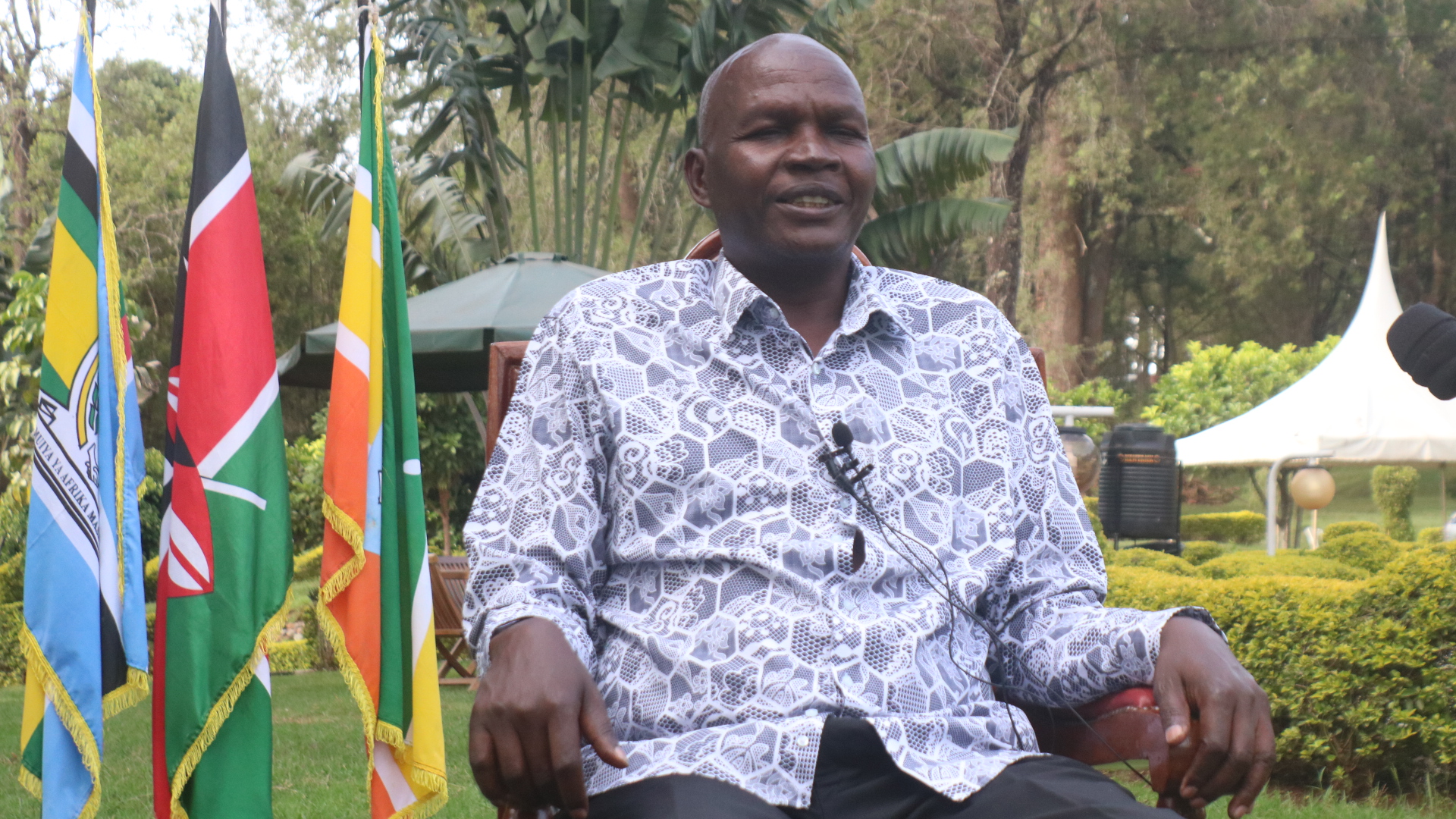Delayed projects divide Baringo County as minority clans eye chance to lead

From left: Former Baringo governor Benjamin Cheboi, Governor Stanley Kiptis and Eldama Ravine MP Moses Lessonet.
Clan politics and stalled projects are some of the major factors that could shape the Baringo gubernatorial race.
It’s bound to be a tough contest between incumbent Governor Stanley Kiptis and his predecessor Benjamin Cheboi. Two other aspirants are running as independents—Eldama Ravine MP Moses Lessonet and Mr Sialo Kimiring, who comes from Mogotio constituency. County assembly clerk Richard Koech of Chama Cha Mashinani (CCM) has also thrown his hat in the ring.
Governor Kiptis and Mr Lessonet ditched Deputy President William Ruto’s United Democratic Alliance (UDA) after coming second and third in the April 14 party primaries, whose results they disputed, claiming irregularities.
The clan factor is bound to be a major determinant, with a section of residents complaining that, since the advent of devolution in 2013, the Arror clan from Baringo North have dominated leadership because of their numbers and influence.
Both Mr Kiptis and Mr Cheboi come from the populous clan, as does the current Woman Representative, Ms Gladwell Cheruiyot.
Equity and equality
The move is said to have disadvantaged the Samor in Baringo Central,the Lembus in Mogotio and Eldama Ravine, the minority Endorois and Ilchamus in Baringo South and the Pokot in Tiaty.
The disadvantaged communities have been rooting for negotiated democracy to have all ethnic groups in leadership.
All the governor candidates say they are still scouting for running mates and are considering several factors, including accommodating the minority communities in the county.
Mr Koech, who hails from Baringo Central, exuded confidence that he would clinch the seat. The certified public accountant said he will consider factors like voter population and gender in his choice for a running mate.
“I’m a believer in equity and equality and supporting marginalised and minority communities. Now that the Arror have won the major seats since 2013, they should share the cake by voting in someone from another community,” he says.
The 2017 Independent Electoral and Boundaries Commission (IEBC) register shows Baringo County has more than 232, 258 registered voters in the six constituencies.
Eldama Ravine has the highest with 54,742 voters, followed by Baringo North (42,774), Baringo Central (38,388), Baringo South (35,162), Mogotio (32,276) and Tiaty (28, 916).
With Mr Kiptis, Mr Cheboi and Mr Lessonet all coming from Eldama Ravine, they are likely to split the vote. The Samor clan is banking on Mr Koech to break the dominance by the Arror—the community having lost in the UDA party primaries in the Senate and governorship races, which were won by Baringo North MP William Cheptumo and Mr Cheboi respectively.
Governor Kiptis’s priorities include completion of projects he initiated in his first term, such as the multimillion-shilling Maoi abattoir and the milk processing plant in Eldama Ravine.
The former Kenya National Union of Teachers (Knut) Eldama Ravine branch secretary said his administration has worked to fight corruption and ensured that residents get services.
He, however, faces stiff competition from Mr Cheboi, who won the UDA party ticket by a landslide to make a political comeback in a race that featured four other aspirants—former Wildlife Principal Secretary Fred Segor, Mr Lessonet and Mr Robert Chelagat.
Mr Cheboi garnered 45,666 votes while Mr Lessonet came second with 30,588. Mr Kiptis garnered 25,976, Mr Segor 16,362 and Mr Chelagat 6,056 votes.
The former governor has the cattle rustling menace as his priority, promising to end it if elected. He also boasts setting up many early childhood education centres in the region during his tenure and improving healthcare through reduction of patient referrals for specialised treatment in neighbouring counties like Nakuru and Uasin Gishu due to inadequate medical equipment in Baringo facilities.
The former Higher Education Loans Board chief executive claimed that several funded projects in the county have stalled since he left office in 2017.
The political row over the stalled projects played out during the inaugural gubernatorial debate in March, when Mr Kiptis and Mr Cheboi engaged in a blame game, sparking public outrage.
Notable stalled projects are the multimillion-shilling Kabarnet stadium that was initiated by Mr Cheboi in 2014, but remains incomplete eight years later.
Others are youth empowerment centres in Mogotio, Kabarnet and Kabartonjo.
At the debate the Nation Media Group organised, Mr Cheboi was hard-pressed to explain the stadium’s poor workmanship and why he never completed.
Agricultural output
The former governor denied claims that funds were misappropriated. He said the project only received Sh40 million, which went towards putting up a perimeter wall, levelling the field and fixing the main gate.
Mr Kimiring, a political scientist and a student of theology, told the Nation that his priority will be to guarantee food security. He pledged to ensure that all arable land in the county is optimised to increase agricultural output.
If elected, Mr Lessonet will focus on improving the county’s economy. He said he would save money by cutting down on travel by county officials and thus release more resources for development.
He further pledged to boost revenue collection in the county.
“I’ll ensure the county generates more than Sh600 million in revenue annually,” he said, and revealed that streamlining cess collection from charcoal traders and motorcycles ferrying farm produce is part of his plan.
He also plans to set up modern schools for needy children to curb the high dropout rate.
TOMMOROW: Homa Bay, where former Nairobi governor Evans Kidero could be Gladys Wanga’s biggest stumbling block to becoming its first woman governor





